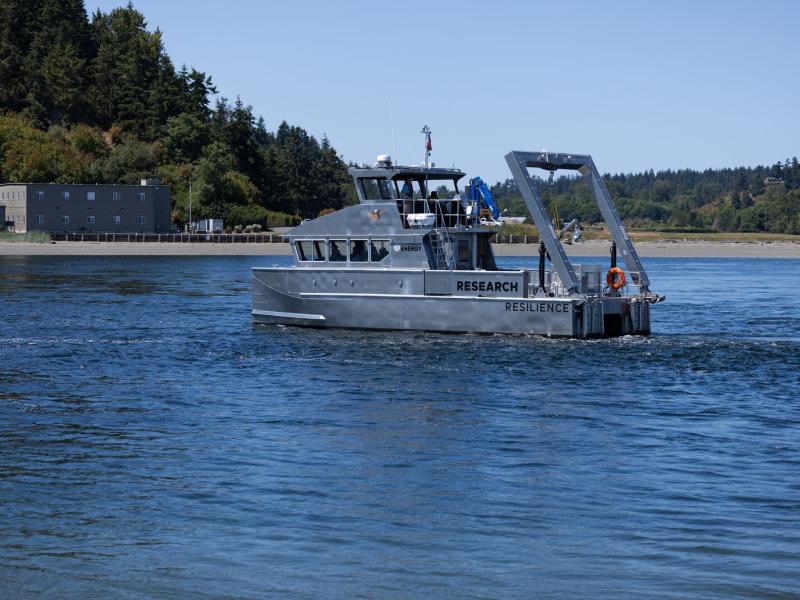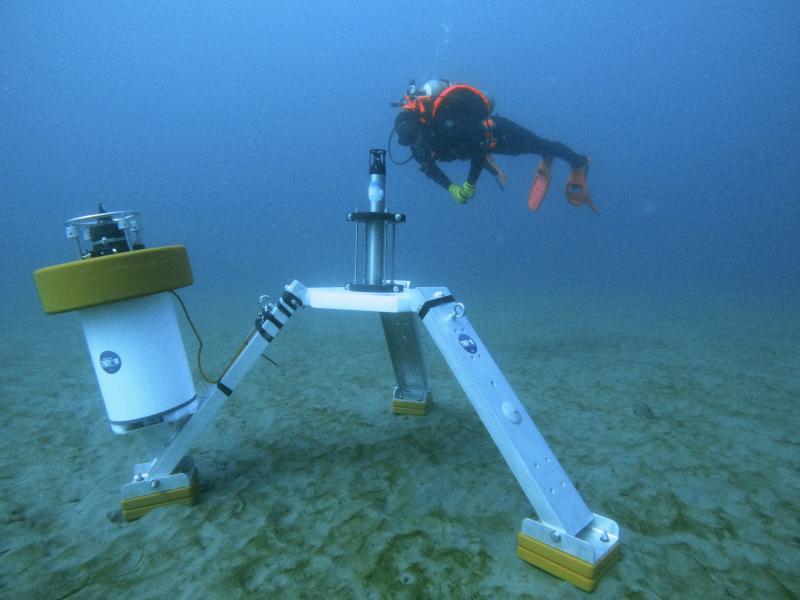
Environmental Monitoring
for Marine Energy
Environmental Monitoring
for Marine Energy
Assessing the effects
of marine energy
Assessing the effects
of marine energy
The energy behind ocean waves and tidal turbines—or marine energy—represents a new renewable resource with vast, untapped potential.
But before industry can move forward, they need to know what kind of environmental impacts could occur. Assessing the environmental effects of marine energy is an important step in the permitting process before deploying devices.
To help reduce potential impacts, researchers are conducting field and laboratory studies at PNNL-Sequim. Scientists are researching the acoustic impacts to fish and marine mammals and the effect of electromagnetic fields from power cables and devices. Studies also investigate the potential for whales and other marine mammals to entangle in mooring lines, and the impact of tidal power turbine blade strike on marine mammals and fish.
Reducing environmental impacts
PNNL leads multiple efforts to gather, evaluate, and disseminate information on the environmental effects of marine energy. These efforts include Tethys, OES-Environmental, and the Triton Initiative.
Tethys is a publicly available online knowledge management system established to improve the exchange of information on environmental effects of marine and wind energy technologies. PNNL developed Tethys in 2011, to support the U.S. Department of Energy (DOE) Water Power Technologies Office (WPTO) and Wind Energy Technologies Office.
PNNL implemented OES-Environmental (formerly known as Annex IV), to study environmental effects of marine energy development. The International Energy Agency-Ocean Energy Systems established OES-Environmental in 2010, with the United States as the lead agency. DOE leads OES-Environmental with the U.S. Bureau of Ocean Energy Management and the U.S. National Oceanic and Atmospheric Administration as federal partners.
PNNL leads WPTO’s Triton, which focuses on reducing environmental impacts of marine energy to marine animals and environments. Triton’s work is done at PNNL-Sequim facilities, using PNNL’s fleet of vessels and scientific dive team to assist instrument developers and researchers with deploying and testing innovative sensors and devices in different marine settings. As a part of Triton, PNNL researchers are examining ways to support commercially available environmental monitoring technologies and to understand the potential risks associated with them.
Through PNNL’s research and innovation, goals to accelerate marine energy technology development can be balanced with protecting the environment.

